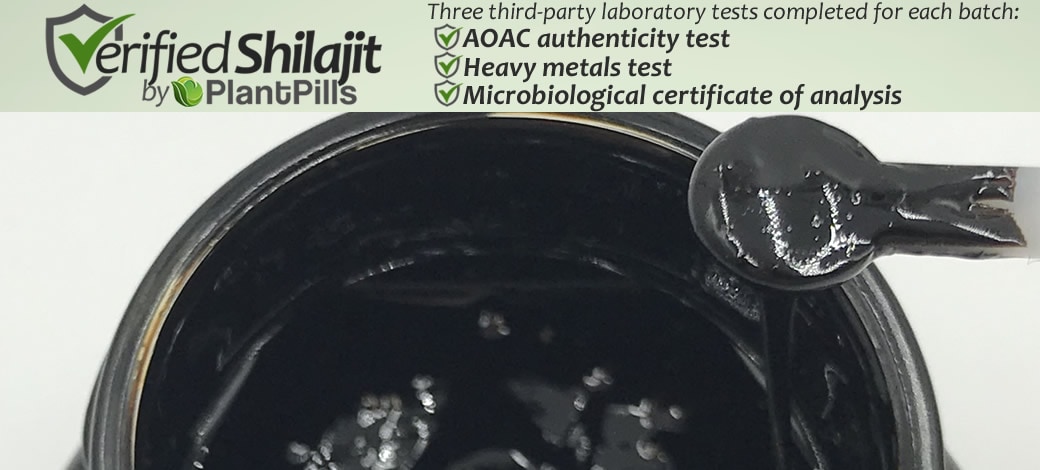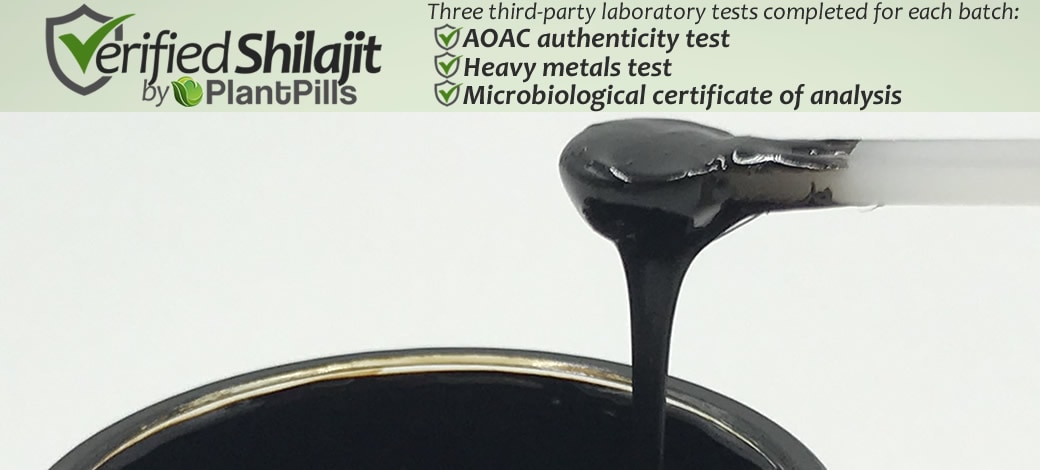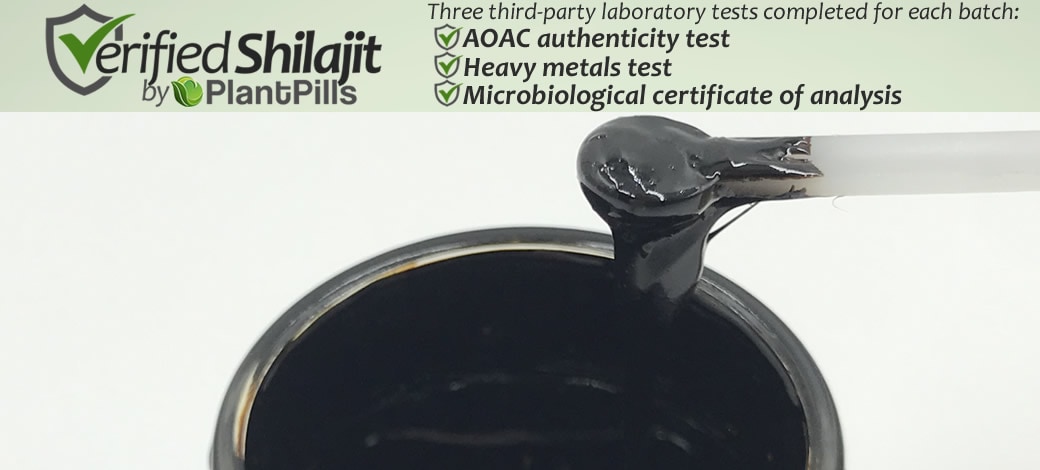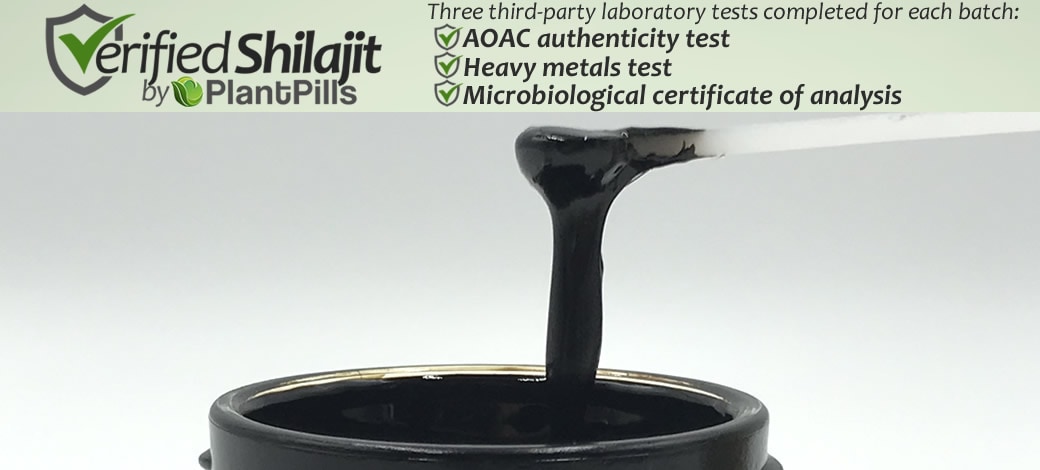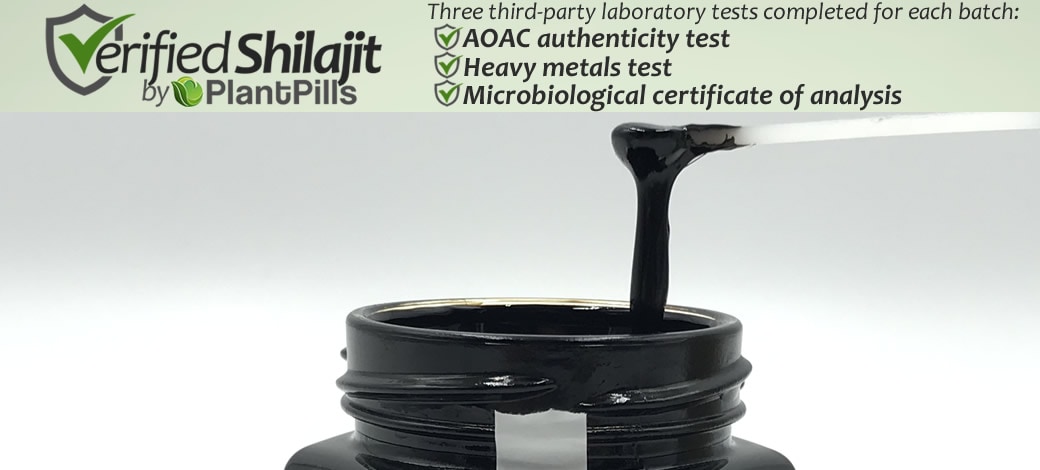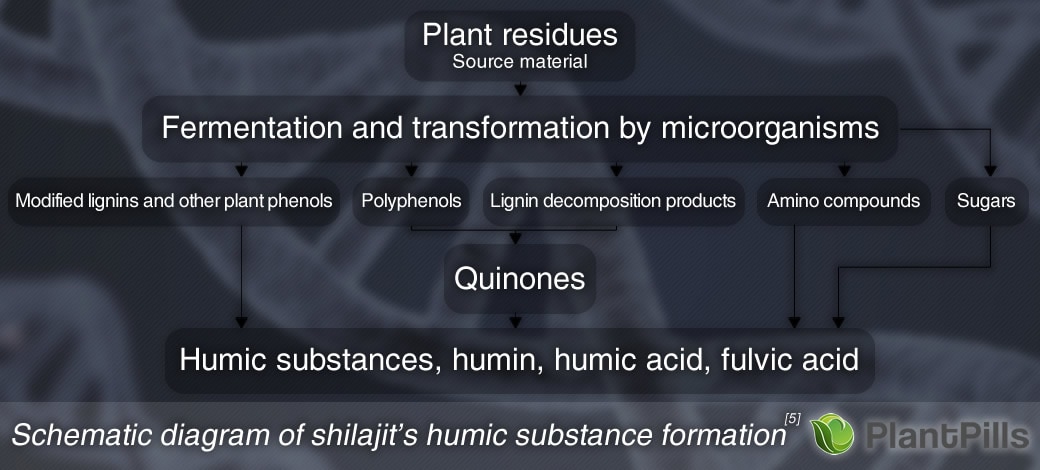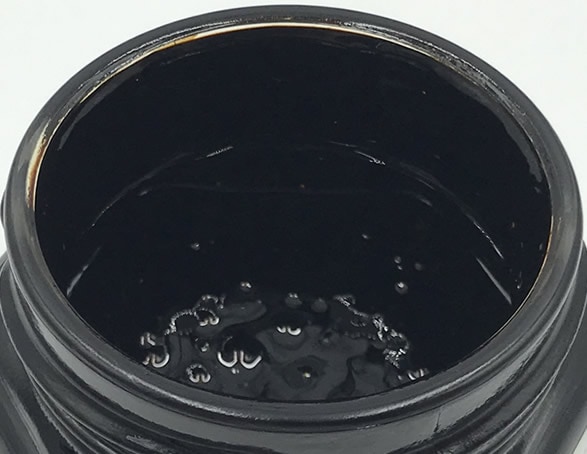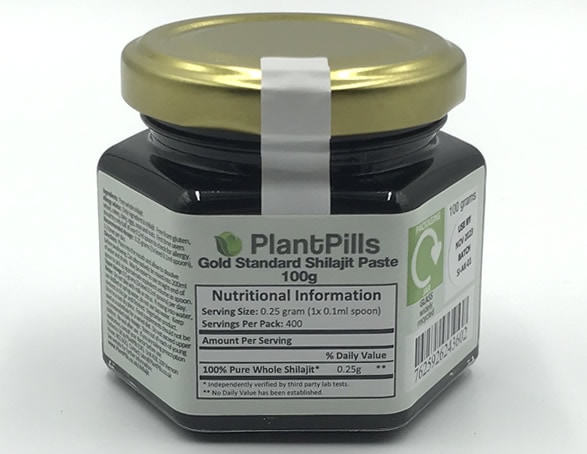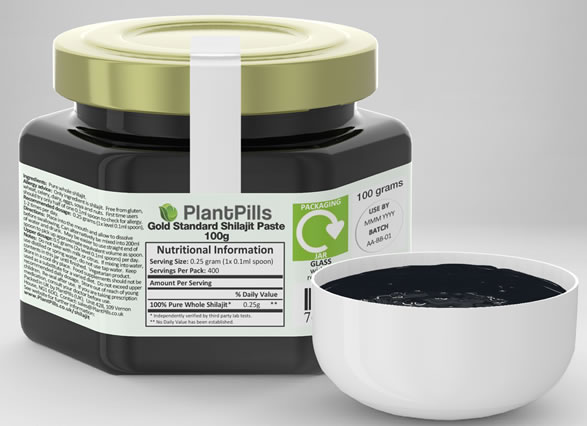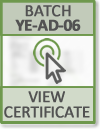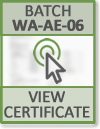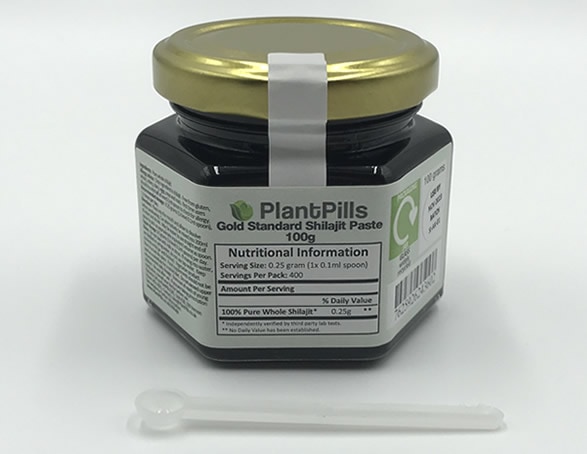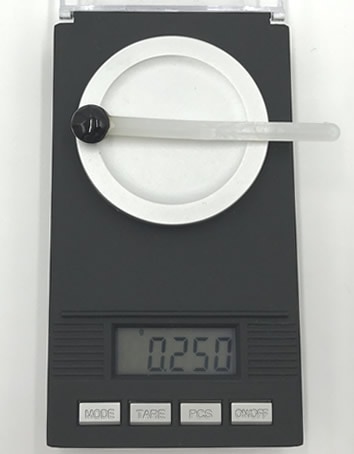|
1
|
Adaptogens: Herbs for Strength, Stamina, and Stress Relief
Winston, David; Maimes, Steven
Inner Traditions / Bear & Company. pp. 201–204. ISBN 978-1-59477-969-5. 2007.
|
|
2
|
Mumie as a kind of natural resources and its signs.
Khakimov ZN.
Tashkent. PhD Thesis. 1974.
|
|
3
|
The need for formulation of Shilajit by its isolated active constituents.
Ghosal S, Lal J, Singh SK, Goel RK, Jaiswal AK, Bhattacharya SK.
Phytother Res 5:211– 216. 1991.
|
|
4
|
Humus chemistry. Genesis, composition, reactions.
Stevenson FJ.
New York: John Wiley. 1994.
|
|
5
|
Medical Drugs From Humus Matter: Focus on Mumie
Igor Schepetkin, Andrei Khlebnikov, Byoung Se Kwon
Drug Development Research 57:140–159. 2002.
|
|
6
|
Shilajit I: chemical constituents.
Ghosal S, Reddy JP, Lal VK.
J Pharm Sci 65:772–773. 1976.
|
|
7
|
Pharmacological actions of Shilajit.
Acharya SB, Frotan MH, Goel RK, Tripathi SK, Das PK.
Indian J Exp Biol 26:775–777. 1988.
|
|
8
|
Mumie liophylisati.
Pharmacopoeia Article
Republic of Kazakhstan. 1992.
|
|
9
|
Silajit. Part II. Determination of metals in Silajit and biological significance of some metals.
Peerzada N, Saramani S, Tariq SA.
Sci Intern 11:79–82. 1999.
|
|
10
|
Humic substances in the biosphere.
Orlov DS.
Soros Obraz Zh (2):56–63. 1997.
|
|
11
|
Introduction in biominerology.
Korago AA.
St. Petersburg: Nauka. 1992.
|
|
12
|
Enzyme-catalyzed phosphoryl transfer reactions
Knowles, J. R.
Annu. Rev. Biochem. 49: 877–919. 1980.
|
|
13
|
Adenosine triphosphate, [mirror]
From Wikipedia, the free encyclopedia
2020
|
|
14
|
Beneficial effect of processed shilajit on swimming exercise induced impaired energy status of mice.
Bhattacharayya S, Pal D, Gupta AK, et al.
Pharmacologyonline 1: 817–825. 2009.
|
|
15
|
Technical Data Report.
Raju S.
Natreon, Inc. 2012.
|
|
16
|
System administration of defined extracts from Withania somnifera (Indian ginseng) and Shilajit differentially affects cholinergic but not glutamatergic and gabanergic markers in rat brain.
Schliebs R, Liebman A, Bhattacharya SK, Kumar A, Ghosah S, Bigl V.
Neurochem Int 30:181–190. 1997.
|
|
17
|
Mumie effect on oxidative phosphorylation and enzymes of mitochondrial respiratory chain of rat liver, small and large intestine.
Almatov KT, Akhmerov AI.
Transact Tashkent Med Inst. 7:11–14. 1977.
|
|
18
|
Effects of Shilajit and its active constituents on learning and memory in rats.
Ghosal S, Lal J, Jaiswal AK, Bhattacharya SK.
Phytother Res 7:29–34. 1993.
|
|
19
|
Effects of Shilajit on biogenic free radicals.
Bhattacharya SK, Sen AP, Ghosal S.
Phytother Res 9:56–59. 1995.
|
|
20
|
Antioxidant defense by native and processed Shilajit: a comparative study.
Ghosal S, Bhattacharya SK.
Indian J Chem 35B:127–132. 1996.
|
|
21
|
Interaction of Shilajit with free radicals.
Ghosal S.
Ind J Chem. 34B:596–602. 1995.
|
|
22
|
Joshi: an interpretation of Ayurvedica findings on Shilajit.
Tiwari VP, Tiwari KC.
J Res Indigen Med 8:57. 1973.
|
|
23
|
Mumie as a kind of natural resources and its signs.
Khakimov ZN.
Tashkent. PhD Thesis. 1974.
|
|
24
|
Medical Drugs From Humus Matter: Focus on Mumie
Schepetkin I, Khlebnikov A, Se Kwon B.
Drug Development Research 57:140–159. 2002.
|
|
25
|
A comparative evaluation of antibacterial properties of Mumie and penicillin.
Shakirov DS.
Antibiotiki 12:248–251. 1967.
|
|
26
|
Treatment of infected wounds with Mumie asil in experiment.
Shakirov DS.
Exp Surg Anesthes 6:36–39. 1969.
|
|
27
|
Application of Mumie in therapeutic practice.
Anisimov VE, Shakirzyanova RM.
Kazan Med J 63:65–68. 1982.
|
|
28
|
The use of Mumie for treatment of postoperative trepanized cavities of the middle ear.
Psakhis BI, Aizenberg SG.
J Ear Nose Throat Dis (5):57–61. 1976.
|
|
29
|
The organization of medical rehabilitation of patients, operated apropos of vertebral-cerebrospinal injury.
Perederko IG, Solenii VI, Tolubayev NS, Marchenko AA, Kirpa YuI.
Second Congress of Neurosurgeons of Ukraine Odessa. 3:Abstract 6. 1998.
|
|
30
|
On the question of Mumie dosage and special features of bone fractures healing with its application.
Ismailova VN.
Med J Uzbek (9):69–70. 1965.
|
|
31
|
Influence of Mumie on bone regeneration and blood alkaline phosphatase after bone fracture in an experiment.
Shakirov AS.
Ortop Travmatol Protez 26:24–27. 1965.
|
|
32
|
Treatment of long tubular bone fractures with Mumie asil preparations in experiments and clinical conditions.
Kelginbaev NS, Sorokina VA, Stefanidu AG, Ismailova VN.
Exp Surg Anesthes 18:31–35. 1973.
|
|
33
|
Reparative regeneration of the bone tissue under the effect of Mumie asyl.
Tkachenko SS, Rutskii VV, Grachev IR.
Ortop Traum Protez 40:49–52. 1979.
|
|
34
|
Treatment of long tubular bone fractures with Mumie asil preparations in experiments and clinical conditions.
Kelginbaev NS, Sorokina VA, Stefanidu AG, Ismailova VN.
Exp Surg Anesthes 18:31–35. 1973.
|
|
35
|
Effects of Mumie on bone regeneration in patients subjected to surgery for osteoarticular tuberculosis.
Suleimanov I.
Ortop Travm Protez 33:64–66. 1972.
|
|
36
|
The complex treatment of paradontosis patients with application of Mumie asil.
Habilov LL.
Tashkent. PhD Thesis. 1971.
|
|
37
|
The treatment of deforming osteoarthrosis by non-specific bio-stimulator Mumie.
Soliev TS.
Med J Uzbek (8): 19–21. 1983.
|
|
38
|
Application of Caucasian Mumie in the treatment for experimental ulcers of gastric and duodenum.
Kozlovskaya VI.
Vrach Delo (4):23–25. 1971.
|
|
39
|
Antiulcerogenic and antiinflammatory studies with Shilajit.
Goel RK, Banerjee RS, Acharya SB.
J Ethnopharmacol 29: 95–103. 1990.
|
|
40
|
Antiulcerogenic activity of fulvic acids and 40-methoxy-6-carbomethoxybiphenyl isolated from Shilajit.
Ghosal S, Singh SK, Kumar Y.
Phytother Res 2:187–191. 1988.
|
|
41
|
The need for formulation of Shilajit by its isolated active constituents.
Ghosal S, Lal J, Singh SK, Goel RK, Jaiswal AK, Bhattacharya SK.
Phytother Res 5:211– 216. 1991.
|
|
42
|
Viper venom-induced inflammation and inhibition of free radical formation by pure compound (2-hydroxy-4-methoxy benzoic acid) isolated and purified from anantamul (Hemidesmus indicus R. BR) root extract.
Alam MI, Gomes A.
Toxicon 36:207–215. 1998.
|
|
43
|
Inhibition of trypsin and chymotrypsin by antiinflammatory triterpenoids from Compositae flowers.
Rajic A, Akihisa T, Ukiya M, Yasukawa K, Sandeman RM, Chandler DS, Polya GM.
Planta Med 67:599–604. 2001.
|
|
44
|
Effect of Mumie on the healing of suppurative wounds.
Tazhimametov BT, Usmanov MU, Dzhuraev KA, Sharipov NI, Zulfikarov K.
Clin Surg (1):51–52. 1987.
|
|
45
|
Mumie as a pathogenetic agent in the treatment of tuberculosis.
Agzamov RA, Arifkhanova SI, Vakhidova GA.
Probl Tuberk 7:49–52. 1988.
|
|
46
|
Effect of Mumie preparation on lymphopoiesis in acute radiation sickness.
Rogozkin VD, Tukhtaev T.
Bull Exp Biol Med 65:110–111. 1968.
|
|
47
|
Application of Mumie in therapeutic practice.
Anisimov VE, Shakirzyanova RM.
Kazan Med J 63:65–68. 1982.
|
|
48
|
Mast cell protecting effects of Shilajit and its constituents.
Bhattacharya SK, Dasgupta G, Bhaduri J, Mukhopadhyay M, Goel RK, Dey R.
Phytother Res 3:249–252. 1989.
|
|
49
|
Effects of Shilajit on rat brain monoamines.
Bhattacharya SK, Ghosal S.
Phytother Res 6:1163–1164. 1992.
|
|
50
|
Effect of Shilajit on memory, anxiety and brain monoamines in rats.
Jaiswal AK, Bhattacharya SK.
Ind J Pharm 24:12–17. 1992.
|
|
51
|
Effects of Shilajit and its active constituents on learning and memory in rats.
Ghosal S, Lal J, Jaiswal AK, Bhattacharya SK.
Phytother Res 7:29–34. 1993.
|
|
52
|
Effects of Shilajit on the development of tolerance to morphine in mice.
Tiwari P, Ramarao P, Ghosal S.
Phytother Res 15:177–179. 2001.
|
|
53
|
Humate-induced activation of human granulocytes.
Riede UN, Zeck-Kapp G, Freudenberg N, Keller HU, Seubert B.
Virchows Arch B Cell Pathol Incl Mol Pathol 60:27–34. 1991.
|
|
54
|
Process for preparing synthetic soil-extract materials and medicaments based thereon.
Laub RJ.
USA Patent 5,945,446. 1999.
|
|
55
|
The role of humic acid in plant nutrition and humus fertilizers.
Khristeva LA.
Trudi Pochv Inst VV Dokuchaeva. 38:108–184. 1951.
|
|
56
|
The effect of sodium humate on metabolism and resistance in highly productive poultry.
Stepchenko LM, Zhorina LV, Kravtsova LV.
Nauch Dokl Vyss Shkoly Biol Nauki (10):90–95. 1991.
|
|
57
|
The content of free amino acids in the tissues of broiler chicks administered sodium humate in the ration.
Zhorina LV, Stepchenko LM.
Nauchnye Dokl Vyss Shkoly Biol Nauki (10):147–150. 1991.
|
|
58
|
The core structure of Shilajit humus.
Ghosal S, Lal J, Singh SK.
Soil Biology Biochem 23:673–680. 1991.
|
|
59
|
Selected herbals and human exercise performance.
Bucci LR.
Am J Clin Nutr 72(2 suppl): 624S-636S. 2000.
|
|
60
|
Safety and Efficacy of Shilajit (Mumie, Moomiyo)
Stohs SJ.
Phytother. Res. 2013.
|
|
61
|
Effect of Gurmar and Shilajit on body weight of young rats.
Gupta SS, Seth CB, Mathur VS.
Indian J Physiol Pharmacol 9:87–92. 1966.
|
|
62
|
Effect of the nonspecific biogenic stimulators Pentoxyl and Mumie on metabolic processes.
Shvetskii AG, Vorobeva LM.
Vopr Med Khim 24:102–108. 1978.
|
|
63
|
Clinical evaluation of spermatogenic activity of processed shilajit in oligospermia.
Biswas TK, Pandit S, Mondal S, et al.
Andrologia 42: 48–56. 2009.
|
|
64
|
Pharmacological actions of Shilajit.
Acharya SB, Frotan MH, Goel RK, Tripathi SK, Das PK.
Indian J Exp Biol. 26(10): 775-7. 1988
|
|
65
|
Traditional Medicine, Proceedings of an International Seminar.
Mukherjee, Biswapati.
Hotel Taj Bengal, Calcutta India. Oxford & IBH Publishing, New Delhi. pg 308-319. Nov. 7-9 1992.
|
|
66
|
Clinical evaluation of purified Shilajit on testosterone levels in healthy volunteers
Pandit S, Biswas S, Jana U, De RK, Mukhopadhyay SC, Biswas TK.
Andrologia, Volume 48, Issue 5, Pages 570-575. 2016.
|
|
67
|
Altai Mountains, [mirror]
From Wikipedia, the free encyclopedia
2020
|
|
68
|
Characterization and biological activities of humic substances from mumie.
Schepetkin IA, Khebnikov AI, Ah SY, et al.
J Agric Food Chem 51: 5245–5254. 2003.
|
|
69
|
A new standardized method for quantification of humic and fulvic acids in humic ores and commercial products., [mirror]
Lamar RT, Olk DC, Mayhew L, Bloom PR.
J AOAC Int. May-Jun;97(3):721-30. 2014.
|
|
70
|
Safety Evaluation of Dietary Aluminum, [mirror]
Madhusudan G.Soni, Susan M.White, W.GaryFlamm, George A.Burdock
Regulatory Toxicology and Pharmacology, Volume 33, Issue 1, Pages 66-79, February 2001.
|
|
71
|
Aluminium content of selected foods and food products, [mirror]
Thorsten Stahl, Hasan Taschan, Hubertus Brunn
Environmental Sciences Europe, December 2011.
|
|
72
|
Aluminium content (third party lab test) of PlantPills Shilajit: 664ppm. 0.25g = 166μg
Aluminium content of bread: 2ppm
[71]. 100g (two slices) = 200μg
Aluminium content of chicken: 0.66ppm
[70]. 300g (two breasts) = 198μg
Aluminium content of pasta: 4ppm
[71]. 50g = 200μg
Aluminium content of chocolate: 39ppm
[71]. 5g = 195μg
|
|
73
|
Dihaloacetonitriles in drinking water: Algae and fulvic acid as precursors., [mirror]
Oliver, Barry G.
Environmental Science & Technology. 17 (2): 80–83. 1983.
|
|
74
|
Dihaloacetonitriles in Dutch drinking waters., [mirror]
Peters, Ruud J.B.; De Leer, Ed W.B.; De Galan, Leo.
Water Research. 24 (6): 797. 1990.
|
|
75
|
Interactions between milk proteins and polyphenols: Binding mechanisms, related changes, and the future trends in the dairy industry.
Yildirim-Elikoglu, S., & Erdem, Y. K.
Food Reviews International, 34(7), 665–697. 2017.
|
